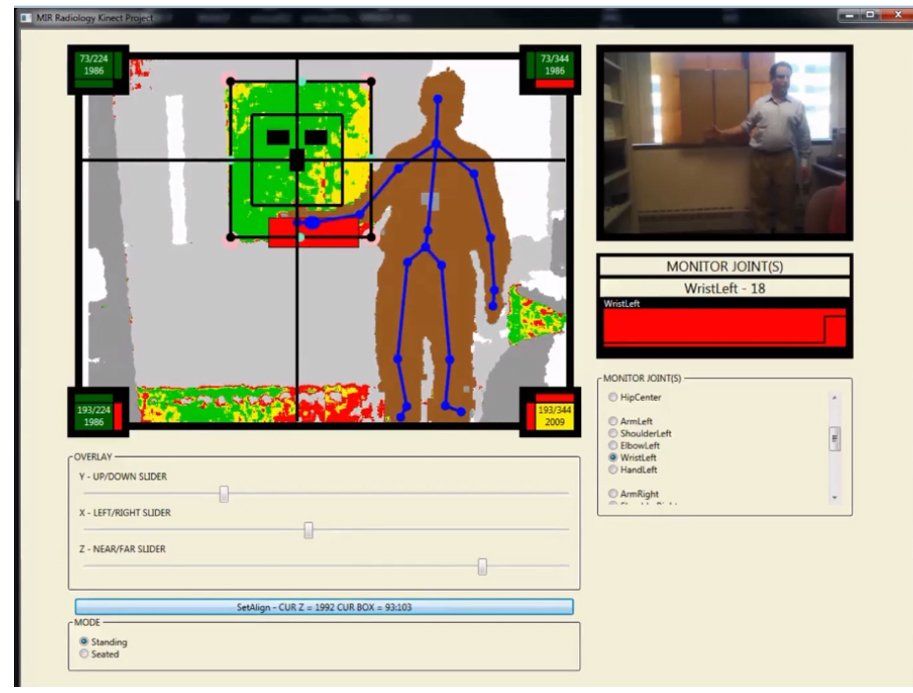Publication
Article
Psychiatric Times
Video Games: Recreation or Addiction?
Author(s):
Many people like to spend at least part of their free time playing video games. However, for some, what starts as innocent recreation becomes an addiction and, at times, tragedy ensues.

Many people like to spend at least part of their free time playing video games; however, for some, what starts as innocent recreation becomes an addiction. Friends, family, work, school, and even personal hygiene are neglected because nearly every spare moment is spent playing a game. Video games are becoming increasingly complex, detailed, and compelling to a growing international audience of players. With sophisticated graphics, characters, and strategic challenges, it is not surprising that some teens and adults would rather play the latest video game than spend time with friends, engage in sports, or even watch television. In extreme cases, addicted gamers may become violent, threatening those who try to control how much they play or who try to stop them. In one tragic story, a 14-year-old boy stabbed his 77-year-old great-grandmother to death after she took away his video game.1
Of course, not all gamers are addicts; many limit their video game playing to a few hours per week, successfully balancing school and/or work activities, friends, and family obligations. For others, gaming becomes an uncontrollable compulsion. Studies estimate that 10% to 15% of gamers exhibit signs that meet the World Health Organization criteria for addiction.2 Similar to persons who exhibit pathological gambling and other compulsive behaviors, some gamers play compulsively, to the exclusion of other interests; their persistent and recurrent online gaming activity results in clinically significant deleterious effects. These gamers may endanger their academic or job functioning because of the amount of time they spend playing. They experience symptoms of withdrawal when pulled away from gaming.
A new condition
The Internet is now an integral, even inescapable part of many people’s daily lives; they turn to it to send messages, read news, conduct business, and much more. However, scientific reports on the topic have recently begun to focus on preoccupation with certain aspects of the Internet, particularly online games.
Studies suggest that when individuals are engrossed in Internet games, certain pathways in the brain are triggered in the same direct, intense way that the brain of a drug addict is affected by a particular substance.3 Gaming prompts a response predominantly in the prefrontal cortex that influences feelings of pleasure and reward. Subsequent reinforcement of these pathways ultimately mimics “true” neurobiological addiction, and the result, in the extreme, is manifested as addictive behavior.
[[{"type":"media","view_mode":"media_crop","fid":"34307","attributes":{"alt":"Video Games: Recreation or Addiction?","class":"media-image media-image-right","id":"media_crop_6514097552211","media_crop_h":"0","media_crop_image_style":"-1","media_crop_instance":"3653","media_crop_rotate":"0","media_crop_scale_h":"200","media_crop_scale_w":"138","media_crop_w":"0","media_crop_x":"0","media_crop_y":"0","style":"float: right;","title":"© stokkete/shutterstock.com","typeof":"foaf:Image"}}]]Persons of all ages, but especially teens and preteens, face very real, sometimes severe consequences associated with compulsive use of video games. Although it is not officially recognized as a diagnosable disorder by the American Psychiatric Association (APA), Internet gaming disorder (IGD) was included in Section III of DSM-5 as a “Condition for Further Study.” By listing IGD in DSM-5, the APA hopes to encourage research to determine whether the condition should be added as a disorder. At this time, the criteria for this condition are limited to Internet gaming and do not include general use of the Internet, online gambling, or social media. The criteria include persistent and consistent use of the Internet to engage in games, often with other players, leading to clinically significant impairment or distress.
What makes online games addictive?
As with any addiction, video game addiction is a multifaceted issue. Video games are designed to be addictive-not in the clinical sense of the word, but game designers are motivated to make their games more interesting so that users increase the amount of time they spend playing. Consequently, games are devised to be just difficult enough to be truly challenging while allowing small accomplishments that compel players to keep playing. In that respect, the design of video games is similar to the design of gambling casinos that allow players to have small wins that keep them playing.
Hooks. Often “hooks” are built into video games, with the intent of making them addictive. Showing a high score is one of the most easily recognizable hooks, because players try to beat their own or someone else’s high score. In online role-playing games, players try to “level up” to achieve higher status, power, and recognition, creating emotional attachment to their game characters.
Social factors. The social aspect is a primary factor in many game addictions. Frequently players are lonely and may never have felt as if they were part of a social group. Players can get a sense of belong-ing from the game, which may provide the only “friends” with whom they interact. When players rely on these new online personas, the distinction between what is real and what is a fantasy role-play game can become blurred. The more the gamer has emotionally invested in his or her character, the more likely that he or she will identify with that character.
Pseudosocial relationships drive modern gaming: game play begets alliances. Most online games include the option of “chats,” allowing players to interact with one another in the guise of the characters they represent. Patients with preexisting anxiety or developmental disorders (eg, social anxiety/phobia, acute stress disorder) are particularly vulnerable to the allure of this virtual escape.
Distorted thinking. Addicted gamers may suffer from cognitive distortions that keep them compulsively engaged in the game. They may feel tense, lonely, restless, or depressed, but in an online game, the player is a great warrior who feels confident, well-liked, and proud. A person with low self-esteem who perceives himself as undesirable can use online gaming as a way to boost self-esteem.
Treatment of Internet gaming disorder
For players who admit they have a problem, the most common response is a guilt-and-purge cycle common to many addictions. Some players who realize they are addicted will kill their characters and delete the game software with no regrets; however, other game addicts are not so successful.
Often gamers refuse treatment until they become deeply depressed or are expelled from school, terminated from a job, threatened with divorce, or thinking about suicide. Treatment can help patients recognize and treat underlying issues that co-occur with IGD. Inpatient care may be required, to provide intensive therapy when the effects of the game are severe. Parents may initiate residential care for a child who is addicted to online gaming, because the child may be unable to recognize the depth of the problem. Although it can be difficult to find a facility that understands the special needs of treating Internet gaming addiction in the US, gradually more inpatient facilities are learning about this new form of addictive behavior.
Initial assessment. Before treatment begins, assess the patient’s current use of all screens and technology. Most clinical intake assessments are comprehensive and cover psychiatric conditions and addictive disorders. However, given IGD’s newness as a defined disorder, symptoms may be overlooked in a clinical interview. Therefore, it is important to routinely assess for the presence of compulsive Internet use.
Structured recovery program. It is important to develop a clear and structured recovery program with each patient regarding media, technology, and screen use. As food addicts measure their recovery success at least partly through objective indicators such as reduced caloric intake and weight loss, gaming addicts can objectively measure recovery success at least partly through reduced hours online and abstinence from contact with problematic online applications.4
Review how many hours per week are being spent online, what events precede use, and at what times the individual is most likely to engage in gaming. The consequences of the behavior should also be tracked, such as not completing homework, not studying, job loss, fighting with family members, divorce and other problems that have developed because of the patient’s gaming.
Lifestyle changes. Therapy should help gamers abstain from gaming and moderate their legitimate use of the Internet and technology. This is the most difficult step. The therapist needs to monitor the patient’s use of technology and help him readjust the amount of time he spends playing games. Certain behaviors become treatment goals, such as being able to complete daily activities; maintain a normal routine; and spend time involved in sports, clubs, or organizations at school or in the community. Children need to reengage with activities they enjoyed before they began spending most of their time playing the game or find new activities they can learn to enjoy as part of abstaining from gaming.
Gaming can be an emotionally draining and time-consuming activity that causes addicts to neglect sleep, diet, exercise, hobbies, and socializing. As treatment progresses toward positive goals, the initial decrease in time spent on the game can lead to idle time or boredom, which increases the temptation to game; this makes it vital that patients enact positive lifestyle changes to fill the void created by time not spent gaming.
Cognitive restructuring. Our moods are driven by what we tell ourselves (internal dialogue), usually based on our subjective interpretations of our experience. Cognitive restructuring helps patients reevaluate whether these interpretations are rational and valid. Cognitive restructuring helps put the patient’s thoughts “under the microscope” by challenging him and, in many cases, rescripting the negative, maladaptive thinking that lies behind low self-esteem. This can help the patient recognize cognitive distortions.
Cognitive restructuring can also help individuals understand that they are using gaming to avoid uncomfortable situations or feelings. For instance, someone who uses an online game as a way to build self-esteem or feel better about his life will start to see that he is using the game to satisfy needs that are not being fulfilled in real life. With this realization, he begins to understand that he has used Internet gaming as a substitute for finding healthy ways to build self-esteem in his immediate relationships.
Cognitive-behavioral therapy. Studies have examined the use of CBT for Internet addiction. In particular, CBT-IA was developed as a model for treating this problem.5 CBT-IA uses cognitive restructuring to break the pattern of using gaming to boost self-esteem. Early outcome studies found CBT-IA to be effective in reducing symptoms, attacking maladaptive cognitions, and managing underlying personal and situational factors in 128 Internet-addicted patients.6
Conclusion
For most players, true recovery involves looking at the issues underlying the game habit. That is, addicted players need to examine the emotional motives that prompt them to play a game excessively and look for alternative ways to satisfy those needs. Successful treatment often involves CBT, including CBT-IA. If the gamer participates in treatment, he will spend less time gaming and more time in healthy patterns of behavior, which might include a reawakened interest in old hobbies, more time spent with family and friends, and getting some exercise and enough rest.
Disclosures:
Dr Young is Program Director of the Internet Addiction Treatment and Recovery Program at the Bradford Regional Medical Center, Behavioral Health Services, Bradford, Pa, and Professor at St Bonaventure University in St Bonaventure, NY. She reports no conflicts of interest concerning the subject matter of this article.
References:
1. Teen stabs grandmother, goes to school cov-ered in blood, says Atlanta PD. NBC33 News Web site. http://www.nbc33tv.com/news/teen-stabs-grandmother-go. Updated April 21, 2014. Accessed March 12, 2015.
2. Kuss DJ. Internet gaming addiction: current perspectives. Psychol Res Behav Manag. 2013;6:125-137.
3. Brand M, Young KS, Laier C. Prefrontal control and Internet addiction: a theoretical model and review of neuropsychological and neuroimaging findings. Front Hum Neurosci. 2014;8:375.
4. Thorens G, Achab S, Billieux J, et al. Characteristics and treatment response of self-identified problematic Internet users in a behavioral addiction outpatient clinic. J Behav Addict. 2014;3:78-81.
5. Young KS. CBT-IA: the first treatment model to address Internet addiction. J Cogn Ther. 2011;25:304-312.
6. Young KS. Treatment outcomes using CBT-IA with Internet-addicted patients. J Behav Addict. 2013;2:209-215.






